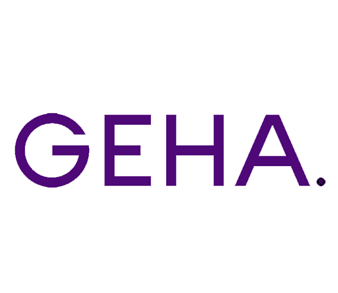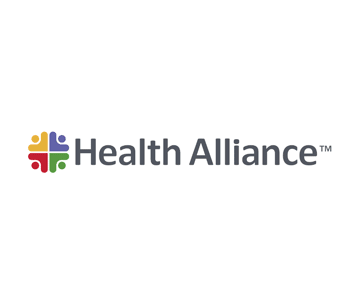Codeine is a narcotic drug to address mild to moderate pain. Many common cold and cough medications can contain codeine in combination with other pain-relieving substances. Since codeine is a milder form of opioid, there is still a risk of drug dependency and abuse. It can be sometimes difficult to distinguish codeine addiction as it comes as an ingredient of many drug variants.
Do you know someone who is abusing codeine, or do you suspect that you may be developing an addiction yourself? In the guide below, you will find out how to identify codeine, codeine colors, dosages, signs of addiction, as well as how to get started with drug abuse recovery.
Codeine Physical Appearance
As mentioned, codeine can come in either tablet forms or the common cough syrup. Most brand version codeine cough syrups have labels combined with another drug and have different dosages and colors as below:
What mg is codeine (different colors)?
- Promethazine-Codeine 10 mg / 5 mL syrup: Purple, flavored with raspberry oral suspension (Brand: Phenergan with Codeine)
- Codeine-Guaifenesin 100 mg / 5 mL syrup: Red, flavored with cherry oral suspension (Brand: Cheracol, Robitussin-AC)
- Acetaminophen-Codeine 12mg / 5 mL syrup: Yellow-orange, flavored with cherry oral suspension (Brand: Tylenol with Codeine, Vopac)
Aside from oral suspension versions, there are also tablet versions that are less common:
- Tylenol-Codeine 300 mg – 60 mg tablet: White, round, has an imprint of “Tylenol Codeine 4 McNeil”
The generic versions also exist and will have labels mentioned above without the brand names. Usually, you would find bottles of syrups with names such as “Promethazine-Codeine”, “Codeine-Guaifenesin”, or “Acetaminophen-Codeine” as these are the typical combinations for oral suspensions. For generic tablets, here is what you would find:
What does generic codeine look like?
- Acetaminophen-codeine 60 mg tablet: White, round, with an imprint of “U 37”.
- Acetaminophen-codeine 30 mg tablet: White, round, with an imprint of “2064 V 3”.
- Codeine sulfate 15 mg tablet: White, round, with an imprint of “54 613”.
- Codeine sulfate 30 mg tablet: White, round, with an imprint of “54 783”.
- Codeine sulfate 60 mg tablet: White, round, with an imprint of “54 412”.
Understanding what color is codeine, the different brand, and generic versions, as well as the doses, can help you discover if a loved one has been abusing the drug. Additionally, it will also help you in identifying drug dependency in yourself if you are currently taking medications with codeine. Don't see your Insurance Provider?
Learn More About Your Insurance Coverage
Signs of Codeine Abuse
Codeine is a type of opioid which means that its typical side effects would be related to sedation and relaxation. Some individuals become dependent on the drug to elicit feelings of pleasure from feeling calm and relaxed. However, there are still other signs of codeine abuse that you can observe:
Physical
- Nausea and vomiting
- Sedation or sleepiness
- Loss of appetite
- Weight changes
- Upset stomach
- Cold and clammy skin
- Reduced breathing and heart rate
Mental
- Anxiety and depression
- Feeling agitated with not taking codeine
- Frequent mood swings
Behavioral
- Not interested in other activities aside from getting codeine
- Faking prescriptions
- Healthcare facility “hopping” to get new prescriptions
- Secrecy and isolation
- Having suspicious drug containers
Looking out for these symptoms can help prevent life-threatening complications such as suppressed breathing, heart rate, as well as a coma-inducing overdose. Since codeine is an opioid, taking large amounts of the drug can potentially damage organ function. By seeking professional help, individuals can prevent the cycle of withdrawal, relapse, and experiencing a dangerous overdose.
How to Get Started With Codeine Addiction Recovery
Codeine addiction may not sound as common as any other form of opioid abuse, but this does not mean that help isn’t available. You can get started right away with these solid steps:
Reach out to a codeine addiction recovery center
Find rehab centers that specialize in codeine abuse. Since opioids have effects that make it difficult to quit, you would need to find a center that has the right facilities and professionals to perform a medical detox. They will provide you with a comfortable place to stay, IV fluids, medications, and other things needed for you to completely wean off safely from codeine.
Codeine abuse treatment centers will also address the underlying problems that trigger addiction. You can start by verifying your insurance or exploring other payment options that suit your needs.
Gather support for formal treatment
There are many ways you can get support from others when you seek addiction treatment. First, you can tell trusted loved ones and family members of your decision to get sober. If it’s another loved one suffering from codeine addiction, you can ask assistance for scheduling an intervention to encourage them to go into rehab.
If you want to get a formal diagnosis or seek counseling and referrals, you can start by reaching out to your provider so they can recommend top-notch rehab centers that would fit your needs.
Find resources to stay informed
While you are in the process of going into rehab, you can take a proactive step by reading through informative sources, blogs, studies, and articles that will educate you about codeine abuse and addiction in general. Watching out for the signs of overdose while having contact information for your support can help keep yourself or a loved one safe from codeine addiction.
Codeine Addiction: Identifying the Drug, Signs of Abuse, and Getting Treatment
Learning how to identify codeine is a great first step in knowing the details of one’s addiction problem. By watching out for the signs of abuse and reaching out to trusted rehab centers, you can change your course of life through addiction recovery.
Sources
Medical disclaimer:
Sunshine Behavioral Health strives to help people who are facing substance abuse, addiction, mental health disorders, or a combination of these conditions. It does this by providing compassionate care and evidence-based content that addresses health, treatment, and recovery.
Licensed medical professionals review material we publish on our site. The material is not a substitute for qualified medical diagnoses, treatment, or advice. It should not be used to replace the suggestions of your personal physician or other health care professionals.















